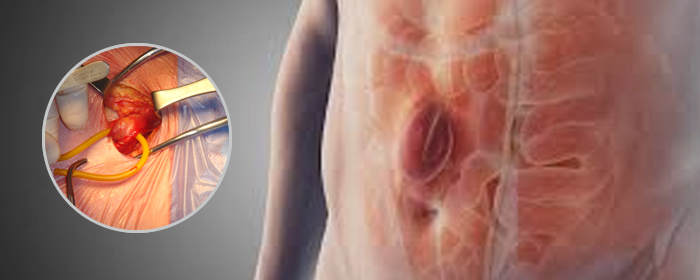Services
Hernia Surgery

A hernia is the protrusion of an organ through the structure or muscle that usually contains it. The condition occurs most often in the abdominal wall, when the intestine pushes through a weak spot in the wall. The most common abdominal wall hernia is an inguinal hernia.
Types of Hernias
Some of the most common types of hernias are:
Inguinal hernias: In the inner groin area, occur when the intestine protrudes through either of two passages in the lower abdominal wall called inguinal canals. Researchers have estimated that about 27% of men and 3% of women will develop an inguinal hernia at some point in their lives.
Femoral hernias: In the upper thigh/outer groin area, occur in deeper passages called femoral canals. They are much less common than inguinal hernias and are far more likely to occur in women than in men. They also present a higher risk of complications if they are not repaired.
Ventral hernias: Occur though an opening in the muscles of the abdomen. There are three types of ventral hernias:
Epigastric hernias: Occur above the bellybutton
Incisional hernias: are caused by a weakening of the abdominal muscle resulting from an incision made during a previous abdominal surgery.
Umbilical hernias: which occur near the bellybutton, are most common in newborns, especially those born prematurely. These hernias usually close on their own by the time the child turns 4. Umbilical hernias can be more problematic when they occur in adults.
Hiatal hernias: Occur when the upper part of the stomach bulges into the chest through a small opening (the hiatus) in the diaphragm. The hiatus allows the esophagus, which carries food from the mouth to the stomach, to pass through the diaphragm.
Symptoms
A common symptom of most hernias is a noticeable lump or bulge, and potentially some discomfort or pain. The lump or bulge may not always be present; for example, it might go away when you lie down. Symptoms may worsen when you are standing, straining, or lifting heavy objects. Most hernias can be confirmed by a doctor during a physical exam, but sometimes imaging is necessary.
Hiatal hernia symptoms are an exception to the general rule, as they do not cause a bulge. But hiatal hernias may cause symptoms such as heartburn, acid reflux, and regurgitation of food or liquids, which are often treated with medication.
Options for hernia surgery?
Hiatal hernia symptoms can often be treated with medication, but most other types of hernias require surgical repair, although not always immediately. There are two primary options:
Open hernia surgery: The surgeon makes a cut in the groin to view and repair the hernia. After repairing the hernia, the surgeon uses stitches alone or stitches and a piece of mesh to close the abdominal wall. The mesh is designed to strengthen the weak area of the abdominal wall where the hernia occurred.
Laparoscopic hernia surgery: The surgeon makes several small cuts in the lower abdomen and inserts special tools to view and repair the hernia. The surgeon typically uses a piece of mesh to close and strengthen the abdominal wall. There are some surgeons who opt for robotic repair, which means they sit at a console controlling robotic arms that perform the surgery.
Management after Surgery
Hernia surgeries typically do not cause a high level of postoperative pain, and most pain can be managed with medications such as acetaminophen (Tylenol or other brands) and ibuprofen (Motrin, Advil, etc.). These pain relievers can be supplemented with opioids, although this often is not necessary.
Limiting the use of opioids helps avoid negative side effects, including problems urinating after hernia surgery, which have been known to occur in a minority of patients after inguinal hernia repair. Postoperative urinary retention occurs most often in people over age 50, especially males. Taking medications as directed prior to surgery, including medicines for benign prostatic hyperplasia, which is caused by enlargement of the prostate, also helps prevent postoperative urinary retention.
Under medical direction, measures might also be taken before surgery to limit postoperative pain and nausea, such as taking acetaminophen for pain and a small dose of promethazine to prevent nausea. Consult your anesthesiologist about whether these are appropriate options for you.